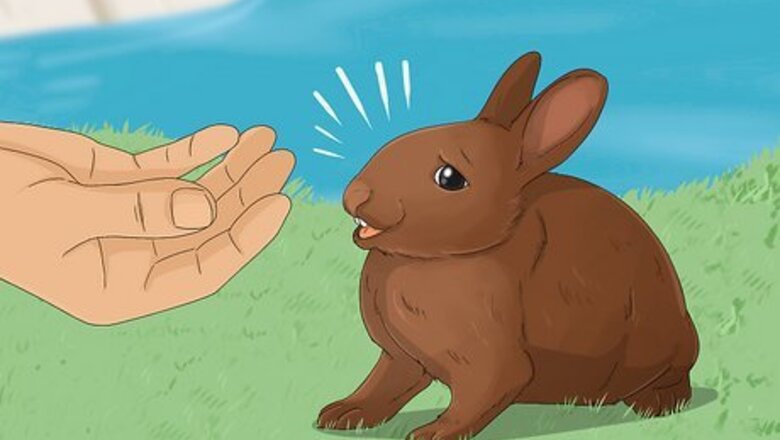
views
Catching a Shy Pet Rabbit
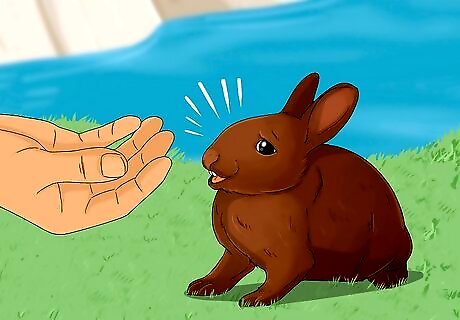
Understand why your pet rabbit might be afraid of you. Rabbits are prey animals and are easily frightened. Your pet rabbit may be shy or afraid of you because it does not know if you can be trusted. If you want your rabbit to be comfortable approaching you, then you will need to do some work to boost their confidence and prove you are not a predator. Avoid chasing your pet rabbit, as this increases their stress and reinforces the idea that they should be fearful. Though your rabbit looks fluffy and cuddly, they naturally will resist being held, especially if you carry them around high off the ground. Forcing this on your rabbit can cause them to struggle and kick, which may harm you and may even be fatal to the rabbit, should they fall on the ground.

Create the right environment. Remove any other pets, turn off the television, and make the room as quiet and peaceful as possible. You want to create an environment in which your rabbit can feel relaxed and safe.
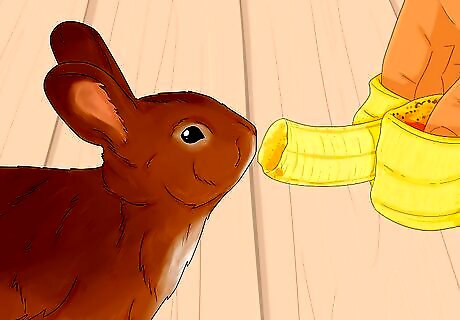
Gather some enticing treats. To get your shy rabbit to approach you, try having some of their favorite treats on-hand. Little bits of carrot, apple, bananas, or oats should do the trick.
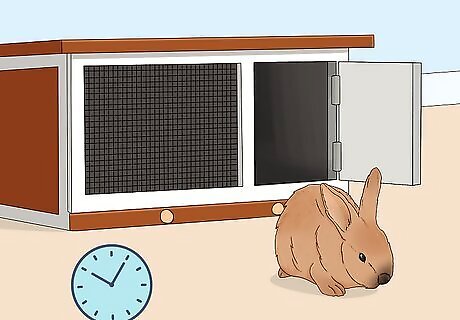
Let your rabbit out of the hutch to explore. Sit or lie flat on your belly and wait for your rabbit to leave their hutch. Do not remove them yourself or try to pull them out. Your bunny is naturally curious and will come to you in time. It may take a while for your rabbit to approach, possibly even an hour. Stay as still and quiet as possible.
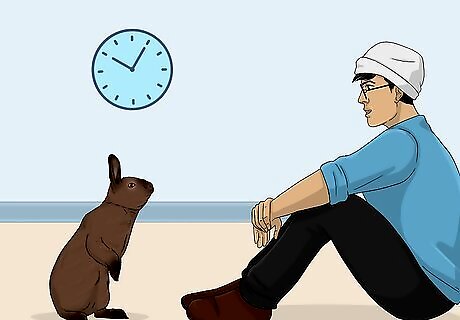
Allow the rabbit to explore you and the environment. Resist the urge to grab or even touch your rabbit. Let your rabbit sniff you, hop on you, and, if they find the treat in your hand, allow them to nibble on it while you hold it in your hand. You may need to do this every day for some time to earn your rabbit's trust. Moving too early can undo your hard work, so be patient.
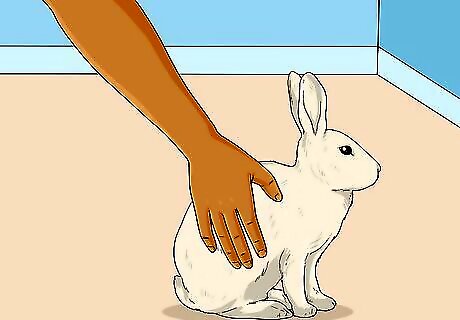
Pet your rabbit when they feel confident. As your rabbit gains confidence and begins to approach you regularly, slowly reach out and pet them gently on the side or on the flank. Avoid raising your hand above your rabbit's head, as this could frighten them.
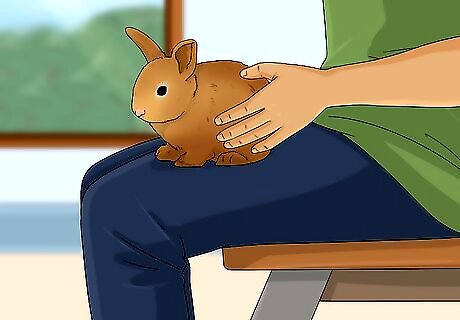
Move the rabbit onto your lap. Rabbits are ground-dwelling animals and do not like being lifted high above the ground. When your rabbit is comfortable and happy with your touch, you can put them in your lap. Assume a seated position and carefully move the rabbit into your lap. Provide treats and gentle petting. Once your rabbit learns that you are safe, they will bond strongly with you.
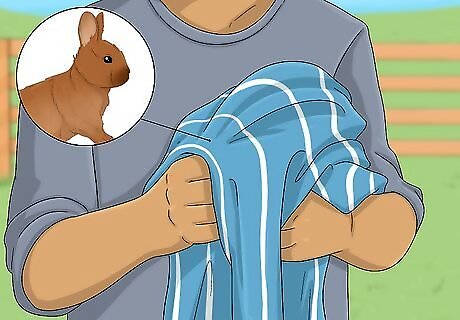
Know how to pick up your rabbit in a hurry. You may be in the process of getting your rabbit comfortable with your presence, but you may need to catch your rabbit quickly, such as if you must take them to the vet. In this case, try the following: Drop a large bath towel over the rabbit, covering them completely. Scoop the rabbit up in the towel, keeping their head covered. The darkness will be comforting to the rabbit. Transfer the rabbit to a dark, secure box.
Locating an Escaped Rabbit and Blocking Escape Routes

Block out some time. Rabbits are smart and fast. In fact, pet rabbits can run up to 35 mph (56.3 km/h), faster than a house cat. In addition, their back legs are designed for jumping, meaning they can leap far away from you quickly. Since your domestic rabbit's ancestors were not predators, they survived by running away and hiding well. You may need a couple of hours to catch a pet rabbit outside, as it will likely take you more than one attempt. Argente Crèmes, grey and white rabbits that pet owners often show, and English lops, brown and white bunnies with floppy ears, are both particularly skittish, so they might be harder to catch. Similarly, Belgian Hares, named so because they look like wild hares in dark brown, may also be difficult to catch as they are particularly quick and smart. Beverens, medium-gray bunnies, Rexes, bunnies with a spotted coat, and Lionheads, a fluffy brown bunny, are also smart.
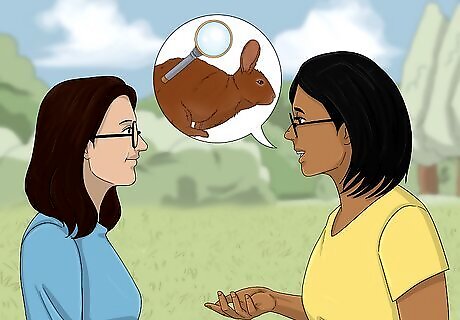
Gather some friends. It's much easier to catch a rabbit if you have several people on your side. With more people around it's easier to herd the rabbit where you want her to go.
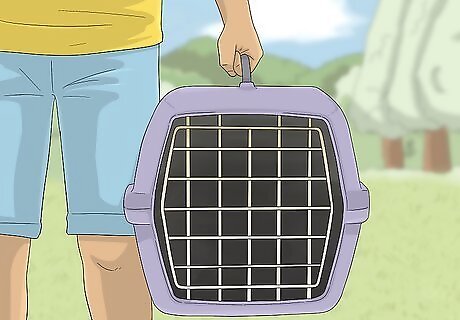
Have a carrier ready. You want to be ready when you do capture the rabbit. Therefore, have someone standing by with a carrier, so you can pop the bunny in once you grab her.
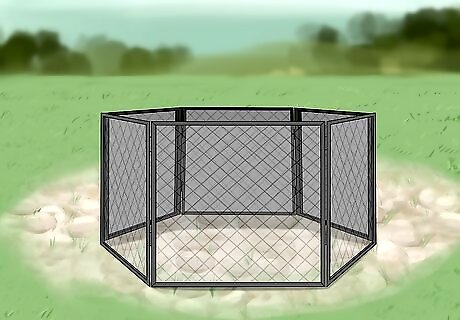
Create a makeshift enclosure. The best way to catch a rabbit is to create a makeshift enclosure. Hopefully, you will already have something on hand to create this enclosure, such as exercise pen enclosures. Basically, you want something tall enough and wide enough that you can create an enclosure around a rabbit outside. When you eventually surround the rabbit, more than one person will need to be holding pieces of the enclosure as you make it smaller around the rabbit. You can use 2-by-4s and chicken wire to make fence frames to have on hand. These should be at least 3 feet (0.91 m) high, though many rabbits can jump higher than that. The width is up to you, but you should consider the length or width of your car if you plan to transport them. Hold the frames together with hinges. You can also use a puppy pen or deer fencing to create an enclosure.
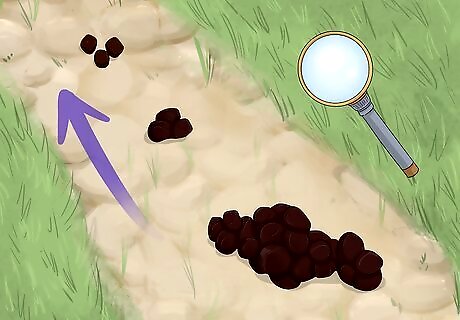
Find the rabbit. If you haven't already spotted the rabbit, look for signs of where she's been. You might see rabbit droppings. You might also see places where the rabbit has chewed on plants or where she's dug small holes. These signs will point you in the direction of the rabbit. Sometimes it's easiest to just sit and watch the area. Leave out some treats that your rabbit likes, and see if she comes out. Check for holes near fences, as that could be a sign she escaped the yard.
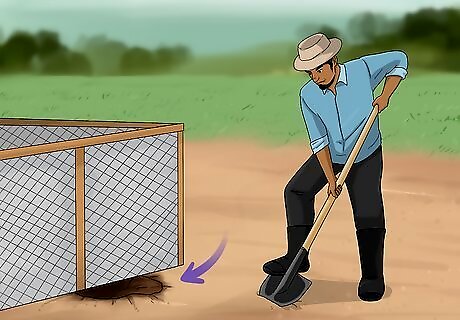
Close escape routes. If you are in a yard, it's best to close off any escape routes before trying to capture her. Shut the gate. Cover any holes you found near the fence line, so she can't escape that way.
Capturing a Wild Rabbit Safely
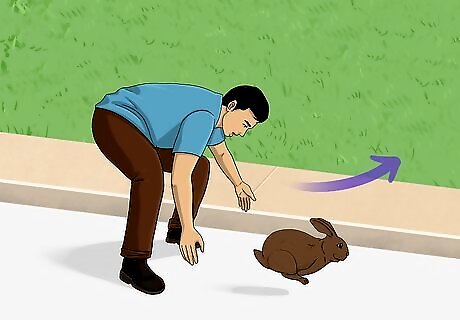
Guide the bunny away from traffic. Roadways are, of course, dangerous for rabbits. If possible push your bunny away from these areas so she won't get hurt. You can guide her away from these areas by using people as barriers, as she'll likely run away from them.

Surround the bunny. Watch the rabbit to see where she hides. Build a large enclosure around her using the exercise pens or wood-and-chicken-wire frames. The easiest way to surround the rabbit is to have several people holding different pieces, forming a large enclosure. Hold the pieces to the ground so the rabbit cannot escape underneath. Slowly work the enclosure smaller by taking out sections while still maintaining a tight circle, making it easier to trap the bunny. Just be sure you don't leave anywhere that she can escape.

Pick up the rabbit. Once the enclosure is small enough, you should be able to gently pick up the rabbit. It is easiest to climb in the enclosure with the rabbit. When picking up the rabbit, make sure to support her back end, propping her feet against your body if possible. Secure the legs by wrapping your arm around the outside of her body and then around the underside of the rabbit. Use your other arm to wrap the other way around the body, securing the shoulders. The best way to capture the rabbit is to get on the ground with her. Talk to her gently and see if she will come to you. She'll be less threatened by you if you're closer to her level. If that doesn't work, you may need more than one person to trap her in a corner. Scoop her up from a standing position. Never pick up a rabbit by her ears. You'll hurt her and frighten it.
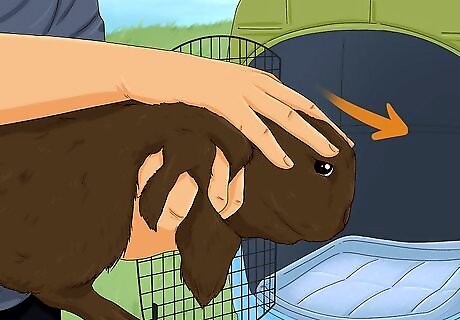
Put her in the carrier. Once you've capture her, place her in the carrier for easy transport. Even if you are just taking her back to the house, it's easiest to carry her secured in a carrier, as she may jump out of your arms. Have the carrier in the enclosure with you, so you don't risk her escaping again.
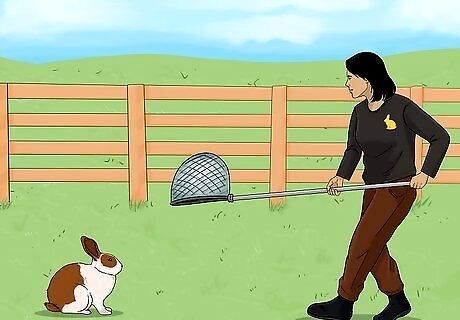
Call in the experts. If you fail at capturing your bunny, try calling animal control. If they are not too busy, the animal catchers may be willing to help you. They will have nets on hand, which will make the job easier, and they will know how to use the nets to capture your rabbit. Using a net to catch a rabbit is actually quite difficult. If you are not trained in catching animals this way, it's unlikely you'll be able to do it. However, if you can sneak up on the rabbit, you may be able to throw a net over it to catch it. Depending on how close you are to the rabbit, a bath towel or a sheet can be a useful aid. Try to corner the rabbit, so they cannot retreat, then throw the towel over the rabbit. Scoop the rabbit up in the towel.
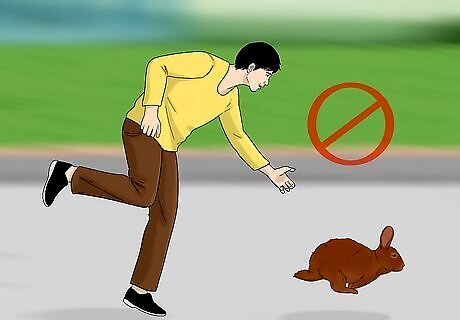
Don't try to catch the rabbit without enclosures. Most rabbits, even affectionate ones, will run before you can capture them. Because they are so quick, they can get away before you even get close, or they may run as you try to reach for them after petting them. In addition, they will learn and will be even more skittish the next time you corner them. They are also able to elbow themselves into small spaces that you won't be able to follow. However, you can fool the rabbit into thinking you have an enclosure by holding a towel sideways and touching the ground. You can then corral the rabbit into a corner and throw the towel over them.
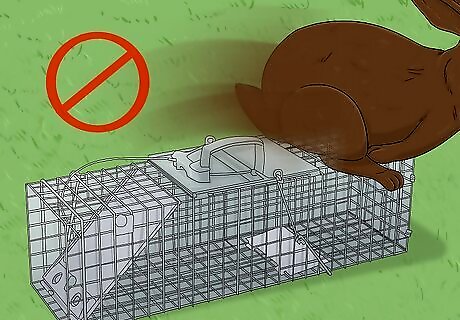
Skip live traps. Live traps can capture a rabbit, but rabbits also can outwit them. In addition, you need to keep a close eye on the trap, as other animals can kill rabbits who are inside. If you do decide to use a live trap, try one that has openings on both sides, which will make it more likely that your bunny will enter. Also, with a live trap, make sure to entice your bunny in with a good treat, such as bananas or carrots.
Identifying a Domestic Rabbit

Look for lop ears. Not all domestic rabbits have lop ears, but all rabbits with lop ears are domestic. Lop ears are when the ears hang down (like basset hound ears) rather than stick back or up.
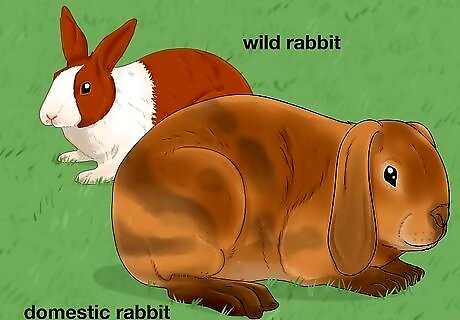
Guess at the weight. Wild rabbits are usually smaller than domestic rabbits. Wild rabbits weigh in at 2 to 4 pounds. If you think the rabbit is bigger, she's more likely to be domestic.

Check the coloring. Wild rabbits all have the agouti coloring. That means they have variegated grey, brown, and tan fur. Domestic rabbits also sometimes have this coloring, but unlike their wild cousins, their bellies are usually lighter. They also come in a variety of other colors, including silver, palomino, chocolate, and tan, and they may have markings on their legs (often dark) or shoulder (often white), as well as spots, depending on the breed.
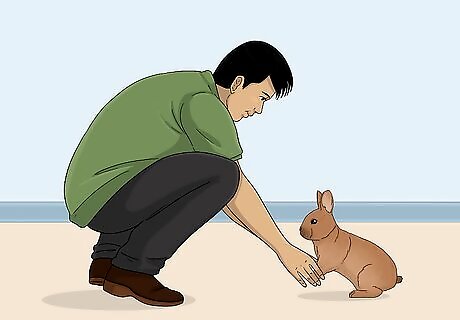
Watch for social behavior. Wild rabbits will be afraid of you and likely run as soon as they see you. Domestic rabbits may be more social. They may even come and ask for attention.
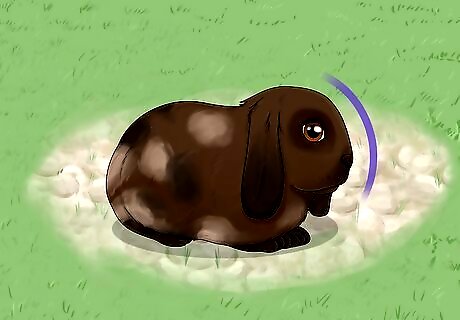
Look at the head shape. Domestic rabbits will have a more curved forehead. On the other hand, wild rabbits are more triangular in their faces. Also, wild rabbits have thin ears, meaning you can almost see through them at the ends.















Comments
0 comment